I have used a voltage follower with a TSH082. I was able to get a half-wave signal with some slight ringing on the output (shown below).
Is there a way to reduce the ringing on the half-wave signal output?
Single Supply Voltage follower
Single Supply inverting amplifier:
I have used a precision rectifier, and I unable to get a half wave signal.
